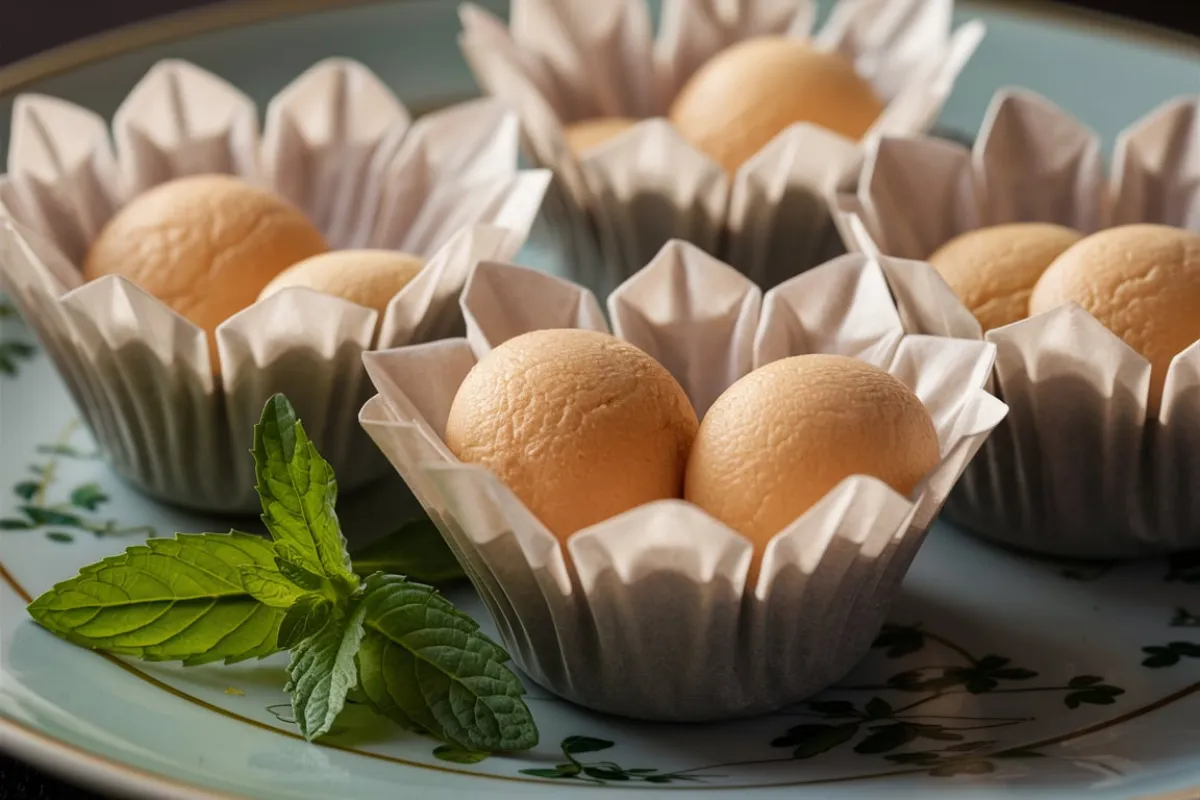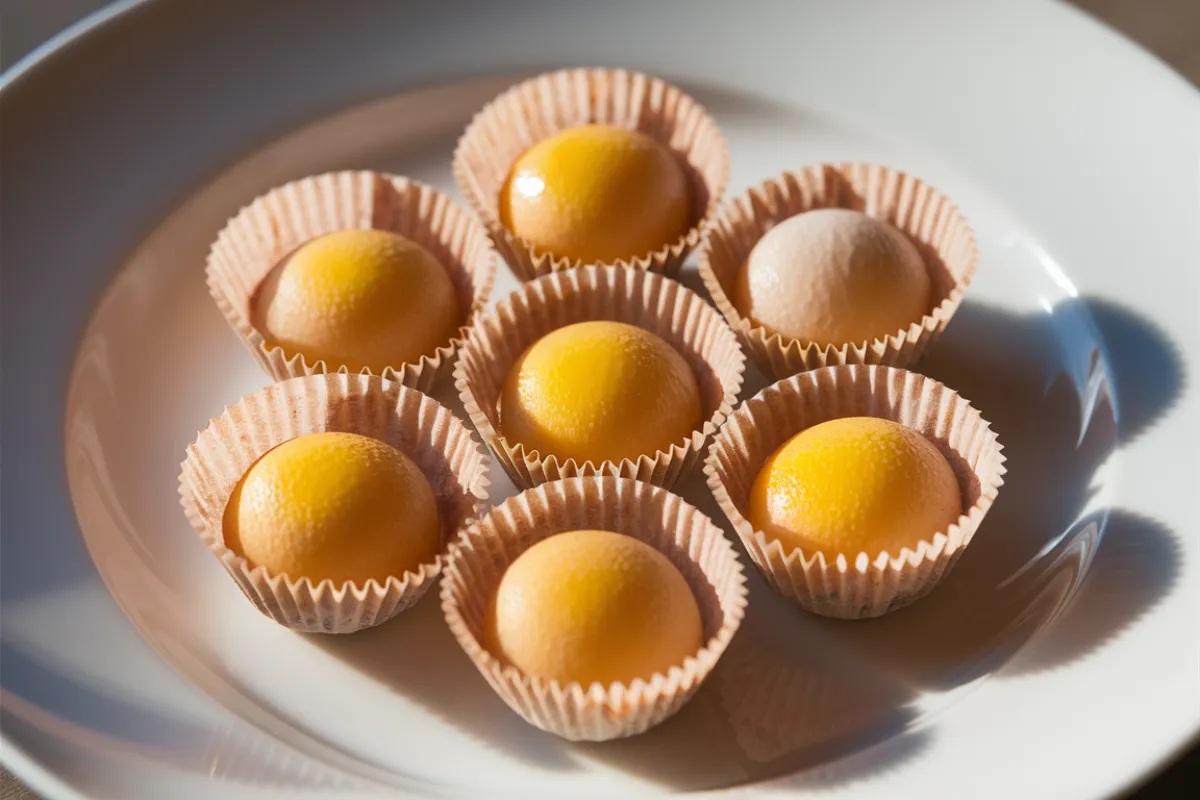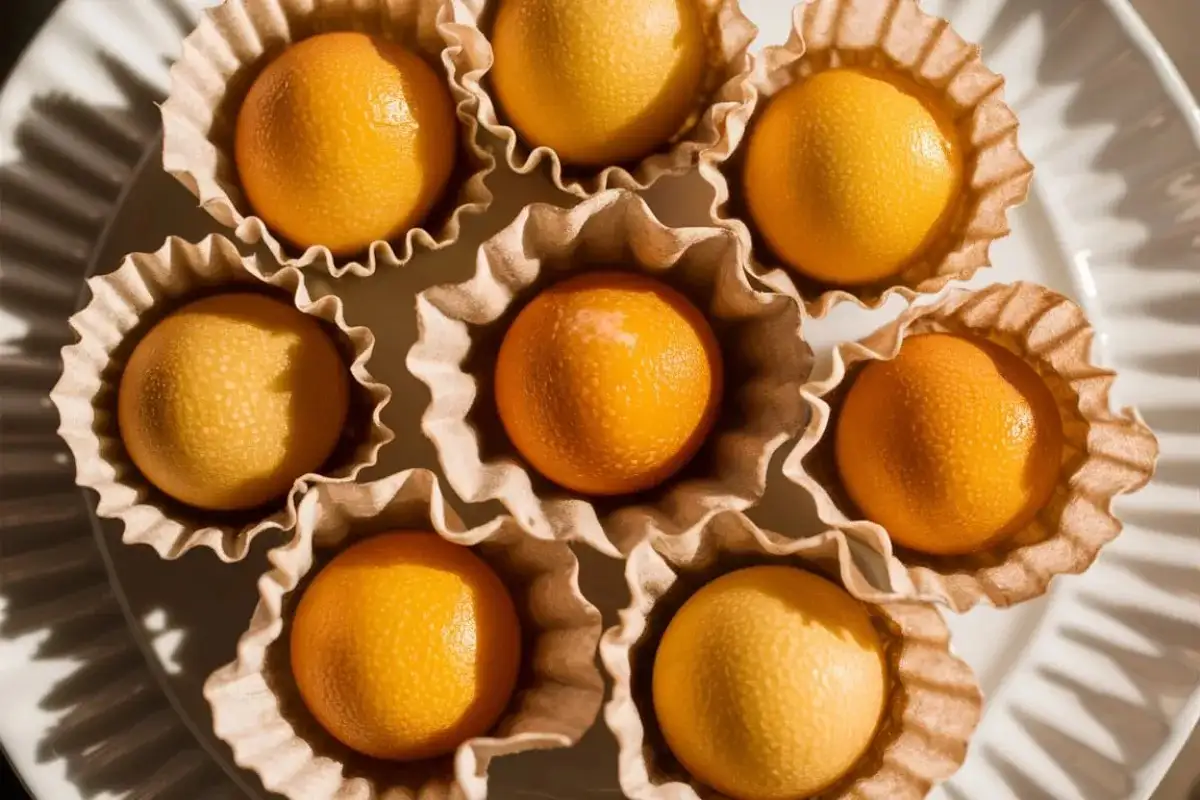Egg bites have surged in popularity as a quick, easy, and customizable breakfast or snack option. Whether you’re meal prepping for the week, catering to various taste preferences, or simply seeking a high-protein, low-carb meal, egg bites offer a convenient solution. One question that frequently arises among home cooks is whether muffin liners can be used when making egg bites. The short answer is yes, but the full explanation involves exploring the different types of muffin liners, their benefits, and how to avoid common pitfalls when using them.
In this comprehensive guide, we’ll delve into the nuances of using muffin liners for egg bites, discussing everything from the types of liners available to troubleshooting common problems. Along the way, we’ll provide you with practical tips, alternative methods, and ways to ensure your egg bites turn out perfectly every time. Let’s start with understanding what muffin liners are and why they are essential for baking.
What Are Muffin Liners and Why Are They Important for Egg Bites?
Muffin liners are small, often circular, papers, silicone molds, or parchment sheets designed to line the cavities of a muffin tin. They serve several purposes, including:
- Preventing Sticking: The primary function of a muffin liner is to prevent your baked goods from sticking to the muffin tin. This is particularly important with recipes that have a tendency to stick, like those containing eggs.
- Facilitating Easy Removal: Muffin liners make it easier to remove your baked goods from the tin, helping to maintain their shape and presentation.
- Simplifying Cleanup: Liners minimize the mess in your muffin tin, making cleanup faster and easier. This is especially beneficial when baking with sticky ingredients.
- Enhancing Presentation: Muffin liners can add a decorative touch to your baked goods, making them more visually appealing.
There are various types of muffin liners available, each with its own set of advantages and considerations. Choosing the right liner can make a significant difference in your baking results.
Types of Muffin Liners for Perfect Egg Bites

Choosing the right muffin liner depends on several factors, including the ingredients you’re using, the desired texture of your egg bites, and personal preference. Here’s a breakdown of the most common types of muffin liners:
1. Paper Liners
Paper liners are the most commonly used type of muffin liner. They are disposable, convenient, and come in a variety of colors and patterns, making them ideal for enhancing the visual appeal of your baked goods. However, when it comes to making egg bites, paper liners can present some challenges:
- Sticking Issues: One of the main drawbacks of paper liners is that they can stick to the egg bites, especially if the liners are not greased properly or if the recipe contains minimal fat.
- Absorption of Moisture: Paper liners can absorb some of the moisture from the egg bites, which may affect the texture of the final product.
To mitigate these issues, it’s important to lightly grease paper liners with cooking spray or oil before adding the egg mixture. This helps to create a barrier that prevents sticking and ensures easier removal of the egg bites once baked.
2. Silicone Liners
Silicone liners have gained popularity due to their non-stick properties and reusability. These liners are made from flexible, food-grade silicone and offer several advantages:
- Non-Stick Surface: Silicone liners are naturally non-stick, which means you don’t need to grease them before use. This makes them an excellent choice for egg bites, which can sometimes stick to other types of liners.
- Reusability: Unlike paper liners, silicone liners are reusable, making them an environmentally friendly option. They are also dishwasher safe, which simplifies cleanup.
- Even Cooking: Silicone liners promote even heat distribution, helping your egg bites to cook evenly without burning or overcooking on the edges.
While silicone liners are generally more expensive than paper liners, their durability and performance make them a worthwhile investment, especially if you frequently bake egg bites or other similar recipes.
Here are some tips for baking with silicone to help you get the most out of your liners.
3. Parchment Liners
Parchment liners are another great option for baking egg bites. These liners are typically made from parchment paper and are designed to be non-stick. Here’s why they’re a popular choice:
- Non-Stick Properties: Like silicone liners, parchment liners are non-stick, which means your egg bites are less likely to stick to the liners. This results in clean, easy removal without compromising the shape of your bites.
- Ease of Use: Parchment liners are disposable, like paper liners, but they offer better non-stick performance. They don’t need to be greased, which saves time and reduces the risk of sticking.
- Versatility: Parchment liners can be used for various baking tasks, making them a versatile addition to your kitchen.
However, parchment liners are not as widely available as paper or silicone liners, and they may be slightly more expensive. Despite this, their superior non-stick qualities make them a top choice for many bakers.
Additional Considerations When Choosing Muffin Liners for Egg Bites
When selecting the right muffin liner for your egg bites, consider the following factors:
- Recipe Ingredients: The ingredients in your egg bites can affect how well they release from the liners. Recipes with higher fat content are less likely to stick, while those with minimal fat may require greasing or non-stick liners.
- Desired Texture: If you prefer your egg bites to have a crispier edge, silicone liners may be a better option as they promote even cooking and crisping. On the other hand, paper liners may create a softer texture.
- Environmental Impact: If reducing waste is important to you, consider using silicone liners, which are reusable and durable, reducing the need for single-use paper liners.
Best Practices for Using Muffin Liners with Egg Bites

Using muffin liners for egg bites is a straightforward process, but following a few best practices can help you achieve the best possible results. Here’s what you need to know:
1. Prepping the Liners
Before adding the egg mixture to your muffin liners, it’s essential to prepare the liners properly:
- Greasing the Liners: If you’re using paper liners, lightly grease them with cooking spray or oil to prevent sticking. Silicone and parchment liners generally don’t require greasing, but adding a light coat of oil can make removal even easier.
- Fitting the Liners: Ensure that the liners are properly fitted into the muffin tin cavities. Press the liners down so that they adhere to the sides and bottom of the tin, preventing them from moving or folding during the baking process.
2. Filling the Liners
How you fill your muffin liners can significantly impact the final texture and appearance of your egg bites:
- Filling Level: Fill the liners about three-quarters full to allow room for the egg mixture to expand as it cooks. Overfilling can lead to overflow, while underfilling may result in small, unevenly cooked bites.
- Uniformity: To ensure even cooking, try to distribute the egg mixture evenly among all the liners. This helps each bite cook at the same rate, avoiding undercooked or overcooked spots.
3. Baking and Removing the Egg Bites
Once the egg mixture is in the liners, it’s time to bake. Follow these tips to ensure your egg bites turn out perfectly:
- Baking Temperature: Bake your egg bites at a moderate temperature, typically around 350°F (175°C). This ensures even cooking without burning the edges.
- Cooling Time: After removing the egg bites from the oven, allow them to cool slightly before attempting to remove them from the liners. This cooling period helps the bites firm up, making them easier to handle and less likely to break apart.
- Removing the Bites: Gently peel back the liners to release the egg bites. If you’re using silicone liners, you can often invert the liner to pop the bites out easily.
Alternatives to Muffin Liners
While muffin liners are a popular choice for baking egg bites, there are alternative methods that can also yield excellent results. Here are a few options to consider:
1. Greasing the Muffin Tin Directly
If you don’t have muffin liners on hand, you can grease the muffin tin directly. This method works well but requires careful attention to ensure even greasing:
- Using Oil or Butter: Brush each cavity of the muffin tin with a thin layer of oil, butter, or cooking spray. Be sure to cover all surfaces, including the sides, to prevent sticking.
- Non-Stick Tins: If you have a non-stick muffin tin, you may not need to grease it as thoroughly. However, a light coating of oil can still improve release and make cleanup easier.
2. Using Non-Stick Muffin Tins
Non-stick muffin tins are designed to reduce sticking, making them a good alternative to using muffin liners. These tins are often coated with a non-stick material that helps baked goods release easily:
- Quality Matters: Invest in a high-quality non-stick muffin tin to ensure consistent performance. Cheaper tins may lose their non-stick properties over time, leading to sticking issues.
- Light Greasing: Even with non-stick tins, it’s a good idea to add a light coat of oil or cooking spray to enhance the non-stick effect and simplify cleanup.
3. Using Cooking Spray
Cooking spray is a quick and convenient way to prevent sticking when baking egg bites. It can be used with or without muffin liners:
- Applying the Spray: Spray a thin, even layer of cooking spray over the muffin tin or liners before adding the egg mixture. Be sure to cover all surfaces to prevent sticking.
- Choosing the Right Spray: Look for cooking sprays that are specifically formulated for baking, as these often contain flour or other ingredients that enhance non-stick performance.
Common Problems When Using Muffin Liners for Egg Bites and How to Solve Them
Even with the best preparation, issues can sometimes arise when baking egg bites. Here are some common problems and how to solve them:
1. Eggs Sticking to the Liners
If your egg bites stick to the liners, it can be frustrating and result in a less-than-perfect presentation. Here’s how to avoid this issue:
- Use Non-Stick Liners: Opt for silicone or parchment liners, which are less likely to stick compared to paper liners. These liners provide a smoother release and minimize sticking.
- Grease the Liners: If you’re using paper liners, always grease them before adding the egg mixture. A light coat of cooking spray or oil can make a significant difference in preventing sticking.
2. Liners Not Holding Shape
Sometimes, muffin liners can lose their shape during the baking process, leading to uneven egg bites. To prevent this:
- Press Down the Liners: Ensure the liners are properly fitted into the muffin tin cavities before adding the egg mixture. Press them down so they adhere to the sides and bottom of the tin.
- Avoid Overfilling: Overfilling the liners can cause them to collapse or fold during baking. Stick to filling them about three-quarters full to allow for even expansion.
3. Egg Bites Overcooking or Undercooking
Achieving the perfect texture in your egg bites can be tricky, especially if they overcook or undercook. Here’s how to ensure even cooking:
- Monitor the Temperature: Use an oven thermometer to ensure your oven is at the correct temperature. Even a slight variation can affect cooking time and texture.
- Rotate the Tin: Halfway through baking, rotate the muffin tin to ensure even heat distribution. This can help prevent overcooking on one side and undercooking on the other.
- Check for Doneness: To check if your egg bites are done, insert a toothpick into the center of one bite. If it comes out clean, they’re ready to be removed from the oven.
Enhancing Your Egg Bites with Additional Ingredients Using Muffin Liners

One of the best things about egg bites is their versatility. Once you’ve mastered the basics of using muffin liners, you can start experimenting with different ingredients to create a variety of flavors and textures. Here are some ideas to get you started:
1. Adding Vegetables
Vegetables are a great way to add flavor, color, and nutrition to your egg bites. Some popular options include:
- Spinach: Fresh or sautéed spinach adds a vibrant color and a mild, earthy flavor to your egg bites. It pairs well with cheese and other vegetables.
- Bell Peppers: Diced bell peppers add a sweet, slightly crunchy texture and a pop of color. They’re especially delicious when combined with onions and cheese.
- Mushrooms: Sautéed mushrooms bring a rich, umami flavor to your egg bites. Be sure to cook them first to release excess moisture and prevent sogginess.
2. Incorporating Protein
Adding protein to your egg bites can make them more filling and satisfying. Consider these options:
- Bacon or Ham: Crumbled bacon or diced ham adds a smoky, savory flavor to your egg bites. Cook the bacon until crispy before adding it to the mixture.
- Sausage: Cooked and crumbled sausage adds a hearty, spicy kick to your egg bites. Try using Italian sausage for extra flavor.
- Cheese: Cheese is a natural companion to eggs, adding creaminess and richness. Cheddar, mozzarella, and feta are all excellent choices.
3. Experimenting with Herbs and Spices
Herbs and spices can elevate the flavor of your egg bites without adding extra calories. Here are some ideas:
- Fresh Herbs: Chopped fresh herbs like parsley, chives, or cilantro add a burst of flavor and color. They’re best added just before baking to retain their freshness.
- Dried Spices: Dried spices like paprika, cumin, or garlic powder can add depth and complexity to your egg bites. A little goes a long way, so start with a small amount and adjust to taste.
- Hot Sauce: If you like a bit of heat, add a dash of hot sauce to the egg mixture before baking. It adds a spicy kick that pairs well with savory ingredients.
Serving and Storing Egg Bites Made with Muffin Liners
Once your egg bites are baked and cooled, it’s time to enjoy them! Here are some tips for serving and storing your egg bites:
Serving Suggestions
Egg bites are incredibly versatile and can be enjoyed in a variety of ways:
- On Their Own: Egg bites make a great grab-and-go breakfast or snack. They’re portable and easy to eat, making them perfect for busy mornings.
- With a Side Salad: Pair your egg bites with a fresh side salad for a light, balanced meal. A simple green salad with a vinaigrette dressing works well.
- As Part of a Breakfast Spread: Serve your egg bites as part of a larger breakfast spread, alongside toast, fruit, and yogurt.
Storing and Reheating
Egg bites are great for meal prep because they store and reheat well. Here’s how to keep them fresh:
- Refrigeration: Store your egg bites in an airtight container in the refrigerator for up to five days. Place a piece of parchment paper between layers to prevent sticking.
- Freezing: For longer storage, freeze your egg bites. Wrap each bite in plastic wrap and place them in a freezer-safe bag. They can be frozen for up to three months.
- Reheating: To reheat egg bites, microwave them on high for 20-30 seconds, or until warmed through. If reheating from frozen, microwave for 1-2 minutes, checking halfway through.
Frequently Asked Questions About Muffin Liners and Egg Bites
1. Do I need to grease silicone muffin liners when making egg bites?
No, silicone muffin liners are naturally non-stick, so greasing is usually not necessary. However, you can lightly spray them with oil for easier release.
2. Can I use paper muffin liners for egg bites without them sticking?
Paper muffin liners can sometimes cause sticking. To prevent this, lightly grease the liners with cooking spray or oil before adding the egg mixture.
3. What’s the best way to prevent egg bites from sticking to muffin tins?
Using non-stick silicone or parchment liners is the best way to prevent sticking. If you’re not using liners, thoroughly grease the muffin tin with oil or cooking spray.
4. Can I freeze egg bites made in muffin liners?
Yes, egg bites freeze well. Allow them to cool completely, then wrap each one in plastic wrap and store in a freezer-safe bag. They can be frozen for up to three months.
5. What is the ideal filling level for muffin liners when making egg bites?
Fill the muffin liners about three-quarters full to allow room for the egg mixture to expand as it cooks, ensuring evenly cooked bites without overflow.
Conclusion:
Using muffin liners for egg bites is a simple yet effective way to enhance your baking experience. Whether you choose paper, silicone, or parchment liners, each type has its own unique advantages that can help you achieve perfect egg bites every time. By following the best practices outlined in this guide, you can avoid common pitfalls like sticking or uneven cooking and enjoy delicious, perfectly cooked egg bites with minimal hassle.
So, the next time you’re making egg bites, don’t hesitate to reach for your favorite muffin liners. Experiment with different ingredients, flavors, and textures to create egg bites that are uniquely yours. And remember, whether you’re a seasoned baker or just starting out, the key to success is preparation and a willingness to try new things. Happy baking!
For additional tips and recipes, check out the Perfect Egg Bites: Recipes, Tips, and Variations on Talia Recipes. Here, you’ll find a wealth of inspiration to take your egg bites to the next level.

